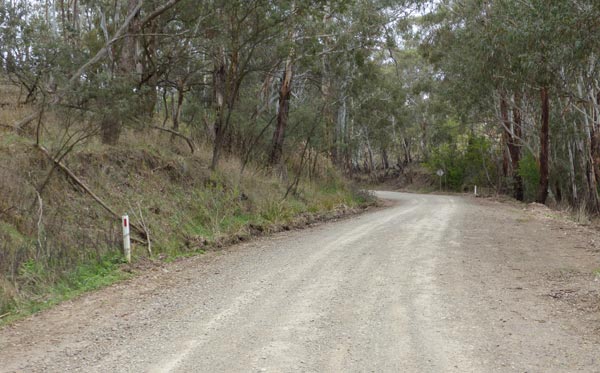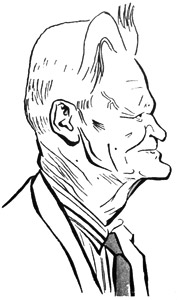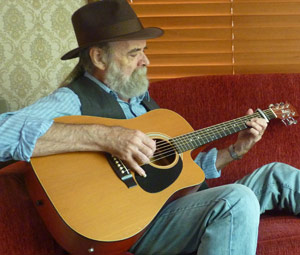Syrian Mary was the name given to a hawker who lived in the New South Wales township of Mudgee. She walked the lonely roads and tracks of the district approximately between the years 1890 and 1910.

Twice each year she would routinely walk north-west to Coolah, a distance of just over 200 kilometres return. Also travelling south-east to Lithgow and back, a return trip of over 250 kilometres, she repeated this trip each year as well. The total distance covered by her annually would have been hard to estimate, as she did not restrict her visits to people living on or near the main roads. She made diversions to customers in out of the way places as well.
To become a hawker or pedlar, one first needed to obtain a Hawker’s Licence. For a yearly foot licence, where her intention was to cover the distances only by walking, Mary would have paid one pound. She also required a good character certificate signed by two referees.
Although Syrian Mary provided a valuable and welcome service to those living isolated lives away from the larger towns, the contemporary newspapers often included negative, anecdotal reports about Syrian hawkers. Under the headline The Syrian Nuisance, The Newcastle Morning Herald and Miners’ Advocate, 2 September 1893, claimed that ‘for a considerable time past the people of the rural districts have expressed annoyance at the number of Syrian hawkers who have been pestering them to buy their trumpery wares’. The Sydney Mail and NSW Advertiser, 21 January 1893, using the hyperbolic headline The Syrian Invasion, claimed that too many ‘coloured hawkers’ were being granted licences. Singling out the Syrians in particular, the report described them as not only being ‘very cunning’ but insinuated that ‘their mode of life is inconceivably disgusting’. Their business ethics were also questioned. It was alleged that they deliberately waited for the woman of the house to be on her own. They then attempted to elicit her sympathy by arriving heavily laden with their baskets. Allegations of rudeness and intimidation were also made. As the Windsor and Richmond Gazette, 28 December 1895, claimed in another biased report, they ‘infest’ the lonely county districts.
Remembering that such newspaper articles were preluding the soon to come White Australia Policy, it was certainly a difficult time for a single woman like Syrian Mary to be travelling in isolated parts of the Australian countryside. The job was already dangerous and insecure without the addition of prejudice provoked by these negative and inflammatory newspaper reports.
The fact that women like Syrian Mary travelled alone with varying amounts of money and goods and had the uncertainty of finding safe shelter at night made them very vulnerable. An example of this was an attack on a Syrian hawker named Mary Mouscat (Masout) in September 1893 (Molong Express and Western District Advertiser). She was criminally assaulted and robbed as she walked in the Molong district “carrying a basket and bundle containing fancy goods”. She also had “£10 in gold, five £1 notes and £5 in silver”. Her attacker was eventually caught and sentenced to ten years imprisonment. The question arises – could this have been Syrian Mary?

Syrian Mary was known to carry her goods in three baskets, one in each hand and balancing the third one on her head. Apparently she later used a pram. The bushman ‘Duke’ Tritton remembered meeting her in his early twenties, while travelling and working in country New South Wales. This would have been sometime between 1900 and 1910.
She obviously made a significant impression on Tritton. Some fifty years later he wrote about her in an article called Once A Jolly Swagman. This article appeared in the December 1960 edition of the Walkabout Australia magazine. He described her ‘as the most remarkable woman I have ever met’. He also noted that she was ‘as straight as a ramrod, and walked like a queen’. To his knowledge, she never came to any harm during her travels, despite the fact that the bushranging Governor brothers roamed this area of the state. He estimated her age to be ‘over sixty’. In a previous letter to The Bulletin, 4 February 1959, he had stated her age ‘was close to sixty’. In the same letter, he said that he once ‘lifted her baskets and guessed the total weight at 40 lb (just over 18 kg) but she walked along, as smartly as the average woman carrying nothing’.

The words ‘as straight as a ramrod, and walked like a queen’, used by Tritton to describe Mary in the Walkabout Australia article, appear not to be his own. The 18 February edition of The Bulletin, included a letter by Jane Williams. It was a response to Tritton’s letter, which had appeared two weeks previously. Her letter contained some very interesting information about Syrian Mary. Apparently, Mary used to visit the Williams family at Wallerawang, twice each year.
‘I never remember her having more than one bundle, which she carried on her head.’ She concluded from this that ‘it must have been good for her posture; she was straight as a ramrod and walked like a queen’.
These memorably descriptive words predate Tritton’s Walkabout Australia article. How they later ended up, unacknowledged, in his article I can only conjecture. I feel that it is necessary to attribute them correctly to Jane Williams, whose letter also contains further valuable information about Syrian Mary’s character. ‘Mary always stayed to tea and dossed-down on the back veranda. She’d be gone at daybreak, and invariably left a present for the children.’
Like Jane Williams, Mary Byers also shared personal experiences of Syrian Mary. Mary Byers’ childhood memories, as retold to Vicki Powys in her book Growing up at Dark Corner, add some more light on the enigmatic Syrian Mary. Mary Byers was born in 1895 and recalled a lady visiting the family home at Dark Corner during her childhood.
‘Another traveller that used to come around selling things was the Syrian lady. Or perhaps she was the Assyrian lady, I’m not sure. Anyway, she sold haberdashery items, and these she carried in a big wicker basket on her head. She always wore a long black dress, and we’d see her, about every three months, walking along the road from the Palmer’s Oakey direction. She spoke just enough English to get by. With the help of some sign language too. I suppose she didn’t have a husband or children to look after; if she did we never saw any sign of them. Mum always asked her in, and the Syrian lady would spread out a tablecloth on the floor of the front verandah, and then proceed to set out all the items she had for sale, cottons, elastic, hairpins and hatpins, needles and pins, ribbons, buttons and lace, all those sorts of things. Mum used to save up so that she could buy from the Syrian lady, since she was cheaper than the shops. I never knew where she had come from or where she was going to, but she passed by our door on a regular basis.’
It seems highly plausible to assume that this visitor was Syrian Mary. It also highlights again the great distances travelled by her to accommodate her grateful customers in isolated areas.
The fascination with studying history has always been for me the realisation that there is always more to discover. A final full stop cannot be put in place. The life of Syrian Mary is a good example of this. There are so many missing pieces to her story. I do not even know her real name. By sharing the limited information I have about her is at least a start. I can also keep on singing a song which I composed about her in the hope that someone has more information or can correct any thing I have written about her.
© Jim Low
 Jim is a singer/songwriter and published author. His background is in education and he has also developed learning materials for the NSW Department of School Education. His passion is Australian history.
Jim is a singer/songwriter and published author. His background is in education and he has also developed learning materials for the NSW Department of School Education. His passion is Australian history.
CONTACT: jim@jimlow.net
WEBSITE: jimlow.net
_________________________________________________________
- Read the lyrics and listen to Jim’s song about Syrian Mary
- Listen to the podcast, Two Women Travellers
